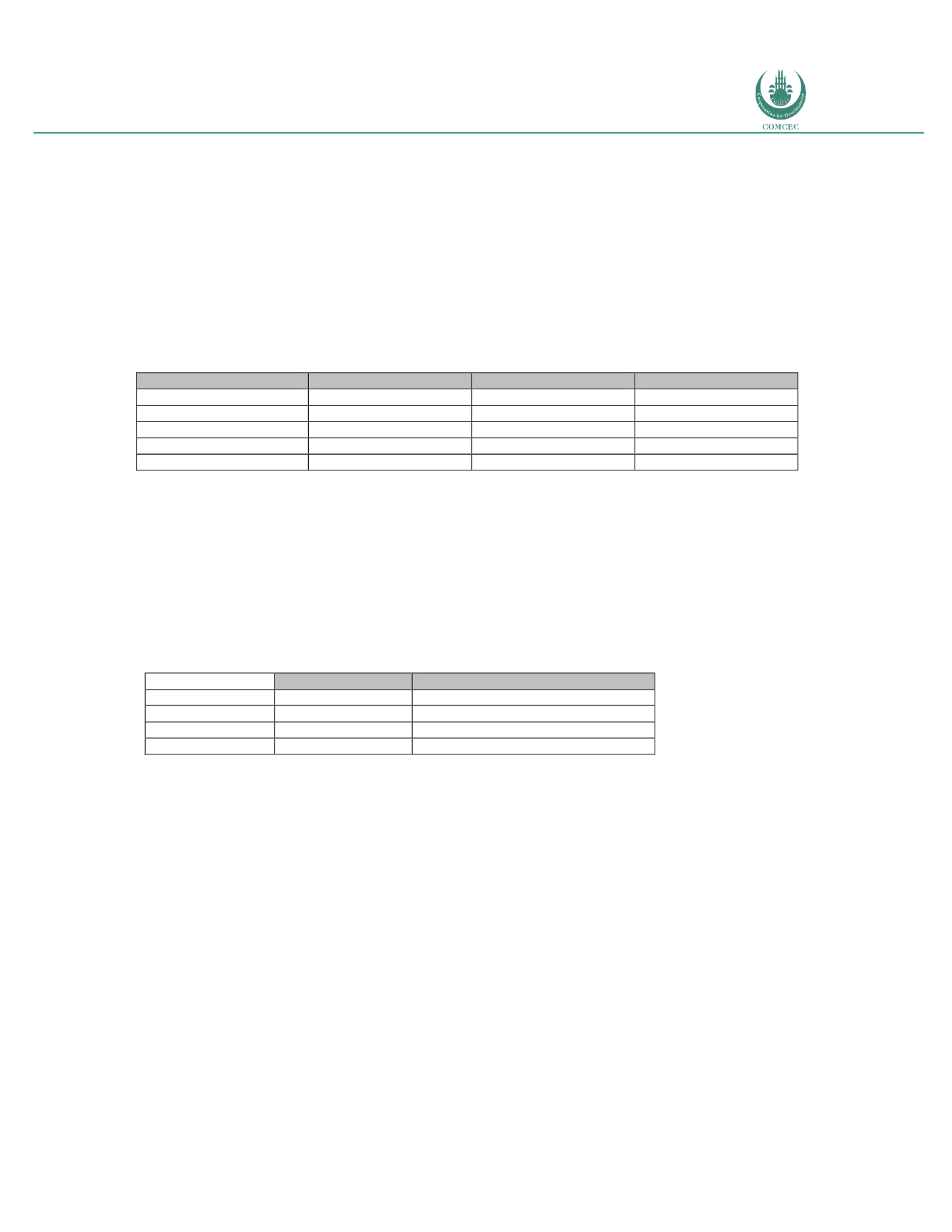

Increasing Broadband Internet Penetration
In the OIC Member Countries
99
represented more than 87% of Internet users. On the other hand, Cote d’Ivoire even lags the
rest of Sub-Saharan Africa, confirming the statistics in figure 28 indicating that Ivorian Internet
users tend to rely on the Internet for applications other than Facebook.
Beyond communications and e-commerce, one of commonly used applications is mobile
money. Cote d’Ivoire is one of the most vibrant mobile money markets in Africa. All three
mobile operators and two non-bank e-money issuers offer mobile money services (see table
43).
Table 43: Cote d’Ivoire: Mobile money services
Mobile Money Service
Service Provider
Partner
Date of Launch
Orange Money
Orange
BICICI (BNP Paribas)
12/2008
MTN Mobile Money
MTN
SGBCI (Société Générale)
10/2009
CelPaid
CelPaid
- - -
2/2011
Flooz
Moov
BIAO
1/2013
Mobile Banking
Qash Services
- - -
11/2013
Source: GSMA (2014)
As a result of this activity, there are close to 7 million registered mobile money accounts, more
than all bank and microfinance accounts put together. This development is fostered by the
forced introduction of electronic transactions. For example, as of 2015, all secondary school
fees had to be paid using mobile money, while half of electric bills are paid using the platform.
As a result, the number of subscribers to mobile money in 2016 reached almost 7 million (see
table 44).
Table 44: Number of MNO-only subscribers to mobile money (2014-2016)
2014
2016 (2Q)
Orange
3,524,717
4,819,769
MTN
1,467,264
1,492,726
MOOV
1,068,551
426,245
Total
6,090,532
6,873,309
Source: Autorité de régulation des télécommunications/TIC de Cote d’Ivoire
Major factors that influence use of fixed and mobile broadband
The major factors that influence non-adoption of the Internet in Cote d’Ivoire will now be
assessed. For this purpose, one should start by measuring the extent of the broadband demand
gap. The demand gap measures the difference between the population that can purchase
broadband service because of service availability, and the population that actually acquires
service, which quantifies the number of non-adopters for reasons other than coverage.
Considering that mobile broadband coverage of the population has reached 83% at the end of
2015, this would indicate that the demand gap is 51%. As table 45 indicates, the demand gap
has been increasing over time because the rate at which operators are deploying 3G networks
is higher than the speed of subscriber growth (see table 45).
















